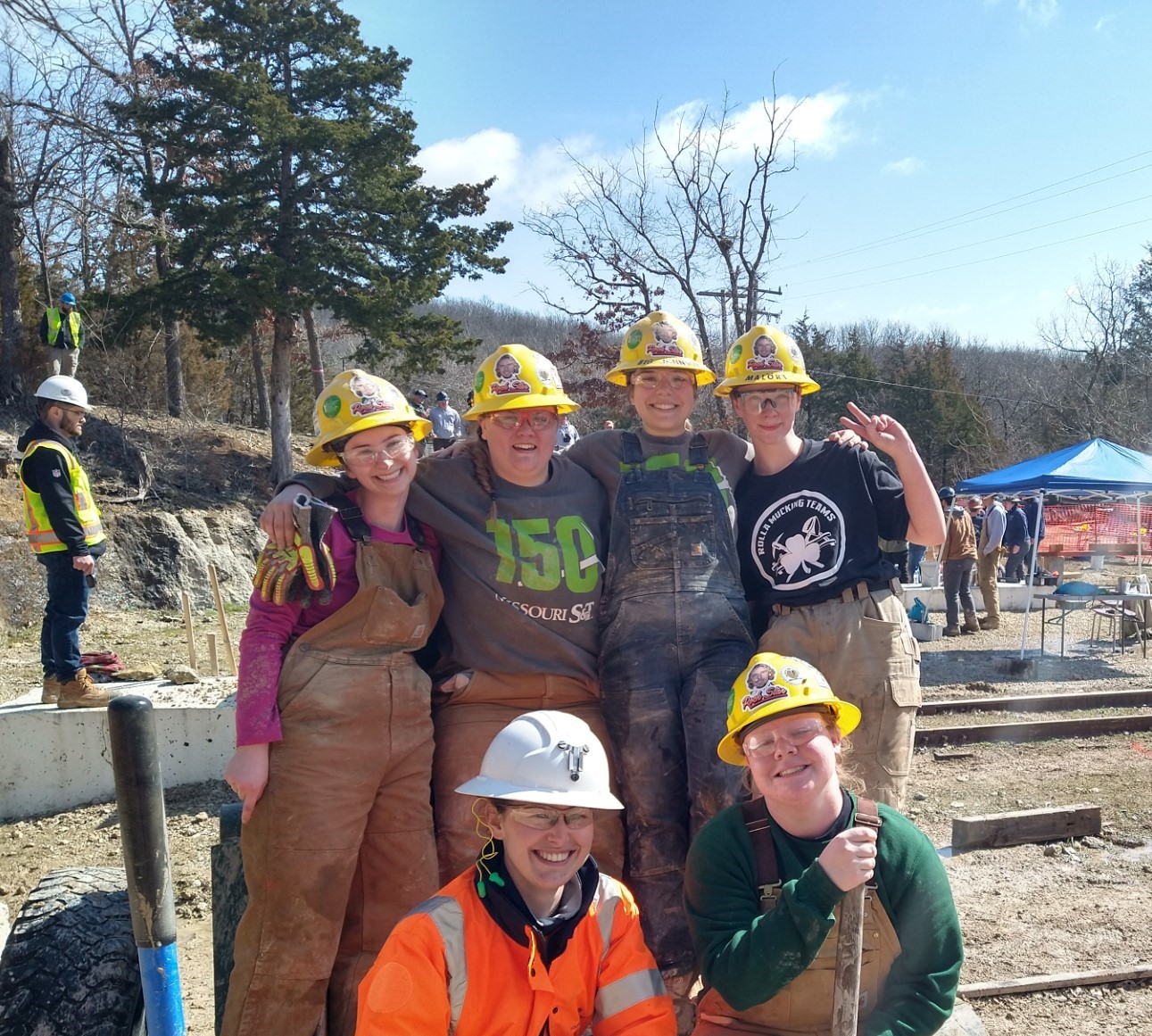Engineers Week: S&T Student Says Mining is Vital to Propel Society Forward

February 20, 2024 - The key to advancing future technologies lies with one of the world’s oldest industries.
That message may sound counterintuitive at first glance, but Kate Johnson, a mining engineering student at Missouri S&T, says it makes perfect sense.
Johnson, a senior from Saint Charles, Missouri, shared her insights as part of a Missouri S&T article series focusing on the 2024 National Engineers Week theme, which is “Welcome to the Future.”

Kate Johnson, back row, third from left, with members of the S&T Women’s Mucking Team at the Intercollegiate Mining Competition S&T hosted in 2022.
Photo courtesy of Kate Johnson
“It is true that mining has a past that extends for several thousands of years,” she says, “but miners continue to play a major role in advancing society. The resources we extract are vital for the development of future technology.”
For example, she says electric vehicle batteries require multiple critical minerals for their production, such as nickel, lithium and cobalt. Touch screens, which are now standard on cell phones and many other devices, typically rely on indium, which is also a critical mineral.
The Energy Act of 2020 defines critical minerals as non-fuel minerals vital to the nation’s economic or national security. Many of these minerals are in short supply in the United States, and Johnson says mining engineers must continue to work to address this shortage so the country has the technological resources necessary to compete in a global society.
“There is an old saying that if you can’t grow something, it has to be mined,” she says. “There will always be a large need for mining, and each generation of miners will continue to make mining safer, more efficient and more environmentally friendly.”
She says mine safety and efficiency have been some of her areas of interest at S&T and while working internships. In the future, she looks for the industry to adopt even more autonomous equipment, which should lead to less human error and potential for injuries, as well as increased productivity.
Although Johnson says she is eager to play her part in shaping the future of her industry, she also embraces mining’s past and the lessons that can be learned from it.
Since arriving at Missouri S&T, she has competed on award-winning S&T mucking teams, which participate annually on the world stage in the Intercollegiate Mining Competition and take part in challenges such as jackleg drilling, track standing, hand mucking, hand steeling, gold panning, surveying and Swede sawing.
The competition began in 1978 to honor 91 miners who died in a fire at Idaho’s Sunshine Mine in 1972.
“We may not use these techniques as often today, but they still provide students with a solid foundation and appreciation for how miners used to operate,” she says.
Johnson says she has been involved in several activities and organizations while at S&T, and this has helped her develop leadership and networking skills that she will find beneficial moving forward.
Some of her other activities include serving as president of S&T’s Women in Mining organization and as a member of the Rolla Rockets Roller Derby team.
Kate, whose full name is Katherine, says that one of her roller derby teammates also shares her love for mining engineering – and her name. She says that Dr. Catherine Johnson, a Robert H. Quenon associate professor of mining and explosives engineering at S&T, serves as a positive influence for her, both when they are skating and when discussing advanced engineering topics.
“I would encourage new students to not be afraid to get involved and stay active,” she says. “Learning doesn’t only happen in the classroom.”
In May of this year, Johnson intends to finish her bachelor’s degree. Then, because she has already completed some graduate-level courses as a dually enrolled student, she will finish her master’s degree the following year.
After that, she says she will be ready to work full-time in the industry, where she intends to be a spark for the future of mining, which, in turn, will propel countless other industries into the future as well.
About Missouri S&T
Missouri University of Science and Technology (Missouri S&T) is a STEM-focused research university of over 7,000 students located in Rolla, Missouri. Part of the four-campus University of Missouri System, Missouri S&T offers over 100 degrees in 40 areas of study and is among the nation’s top public universities for salary impact, according to the Wall Street Journal. For more information about Missouri S&T, visit www.mst.edu.

